
Aprender es modificar o adquirir nuevas habilidades, destrezas, conocimientos, conductas y valores mediante la experimentación, el estudio, la observación, el razonamiento o la instrucción. Múltiples y variados juegos disponibles hoy en día, desde los más clásicos hasta los más innovadores, pueden ser grandes herramientas para construir una variedad de aprendizajes: lectoescritura, matemáticas, razonamiento y resolución de problemas, etc. aportando motivación e interés a los jugadores. Más allá de la estimulación de las inteligencias múltiples, fomentaremos la autoestima, incentivaremos la cooperación y el trabajo en equipo y mejoraremos el comportamiento y la actitud, entre otros muchos aspectos.
 Auditory Memory Caterpillar
29,90 € (VAT not included)
Auditory Memory Caterpillar
29,90 € (VAT not included)
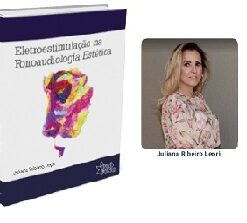 ELETROESTIMULAÇÃO NA FONOAUDIOLOGIA ESTÉTICA
29,90 € (VAT not included)
ELETROESTIMULAÇÃO NA FONOAUDIOLOGIA ESTÉTICA
29,90 € (VAT not included)
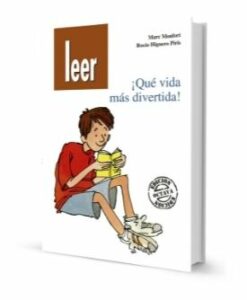 "¡Qué Vida más Divertida!"
(VAT not included)
"¡Qué Vida más Divertida!"
(VAT not included)
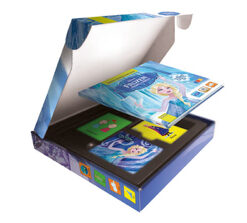 Story with pictograms - Frozen
15,50 € (VAT not included)
Story with pictograms - Frozen
15,50 € (VAT not included)
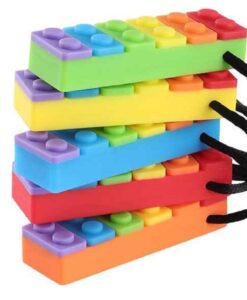 Multicolor textures teething necklace
8,00 € (VAT not included)
Multicolor textures teething necklace
8,00 € (VAT not included)
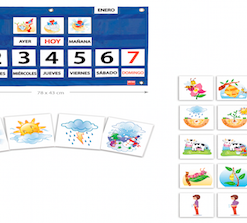 Weekly calendar
32,50 € (VAT not included)
Weekly calendar
32,50 € (VAT not included)
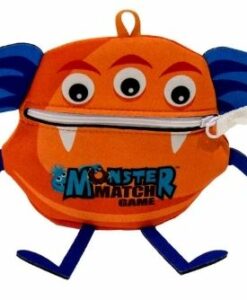 Montser match - attention
11,55 € (VAT not included)
Montser match - attention
11,55 € (VAT not included)
Price filter
No account yet?
Create an AccountThe 50 large photographs allow you to name the different objects in the classroom and to discover the activities of the nursery school: manual activities, motor activities, musical instruments, games, learning materials and classroom furniture.
Specific resource to expand vocabulary, improve lexical access, enrich semantic fields, etc. It also allows the creation of sentences with the selected word both orally and in writing.
The box contains 50 color photographs (21 x 15 cm) and 1 didactic guide.
https://logopedicum.com/wp-content/uploads/2017/05/objetos-claseok-247x223.jpeg 35.60 instock LANGUAGEMorphology and syntaxSemantics 0 0.00 0 https://logopedicum.com/wp-content/uploads/2017/05/objetos-claseok-247x223.jpeg 2160621657217052126721683 35.60 29.42 0.00 0.00 2017-05-02T12:51:38+02:00Cute puzzle with flexible fruit pieces to assemble and discover which fruit it is. Encourages children to play cooperatively, introduces them to the world of healthy food and to want to try foods that are not always easy to introduce in the diet.
Pedagogical values: • Physical development - motor skills • Communication and language - reasoning • Understanding the world - observation Contents: 18 flexible pieces of 10x10 cm to form 6 fruits. 1 "More Ideas to Play" booklet. Recommended age: 2 to 5 years old https://logopedicum.com/wp-content/uploads/2022/07/flexi-form-frutas-247x300.jpg 11.98 instock De 3 a 6 añosJuguetes terapéuticosLANGUAGESemantics 0 0.00 0 https://logopedicum.com/wp-content/uploads/2022/07/flexi-form-frutas-247x300.jpg 2173821297218092161221603 11.98 9.90 0.00 0.00 2022-07-15T17:47:44+02:00The method tries to achieve the approach to the basic syntactic or functional structures of the language with the basic vocabulary, based on observation. In this way, it turns out to be a symbolization of the reality of the children who see it and structure it in a coherent expression.
The method is indicated for deaf and hearing impaired, mentally handicapped, developmentally delayed, aphasic and dysphasic children.
It can also be a suitable material to stimulate the language in students of Early Childhood Education or Primary Education students of integration.
https://logopedicum.com/wp-content/uploads/2021/11/vocabulario-basico-imagenes-247x300.jpg 20.00 instock BooksHearing and languageLANGUAGESemantics 0 0.00 0 https://logopedicum.com/wp-content/uploads/2021/11/vocabulario-basico-imagenes-247x300.jpg 2126721693212972165721663 20.00 19.23 0.00 0.00 2021-11-30T19:33:55+01:00Fun and educational game that consists of identifying sounds of the city, instruments or animals while also learning 120 words in 8 different languages. This new Sentosphere kit is a new proposal for children to develop their musical and listening skills. It is ideal to play in a team and have a good time discovering new sounds and melodies. With this lottery or lotto of sounds, 120 sounds are presented with questions formulated in 8 different languages. When the players recognize the sound, they have to quickly press the button. The player who recognizes the most sounds will win. Ideal game for those patients, students or children with whom we want to train auditory and/or phonological skills, auditory attention and active listening, among many other aspects. Age: From 4 years old.
Features: - From 1 to 5 players. - Game duration: 20min - Contains: Electronic player, 120 circular cards and instructions Dimensions: Packaging: 28cm (H) x 34cm (W) x 40cm (L) https://logopedicum.com/wp-content/uploads/2022/05/loto-sonidos-247x300.jpg 35.03 instock Juguetes terapéuticosDe 3 a 6 añosHearing, Speech, and VoiceAuditory perceptionLANGUAGESemantics 0 0.00 0 https://logopedicum.com/wp-content/uploads/2022/05/loto-sonidos-247x300.jpg 2163621666216122129721276 35.03 28.95 0.00 0.00 2022-05-25T12:59:41+02:00It is based on the relationship between two situations represented graphically, a relationship that includes one or more of the concepts of cause, effect or consequence.
Concepts are relatively complex that can be grasped intuitively from previous concrete experiences or that depend on knowledge acquired through contact with adults or teaching.
In all cases, the verbal expression of these relationships presents a certain level of complexity, especially in the use of conjunctions and verb tense agreement.
https://logopedicum.com/wp-content/uploads/2021/11/parejas-logicas-247x300.jpg 11.99 instock BooksHearing and languageLANGUAGESemantics 0 0.00 0 https://logopedicum.com/wp-content/uploads/2021/11/parejas-logicas-247x300.jpg 2160321261216062170521809 11.99 11.53 0.00 0.00 2021-11-28T11:59:46+01:00Stackable cubes of resistant cardboard, representing small houses of different farm animals that on their different faces have a variety of colors and dots to begin to trace the first numbers. Each house contains an animal and this, beyond encouraging the imitation of onomatopoeias and lexical knowledge of the semantic field "animals" will also help us to optimize the auditory understanding of spatial concepts and relationships: inside, outside, next to, etc.
Contains:These pairs of plates illustrate everyday situations in which there are differences in each pair to be located. The task is to identify and explain them verbally in order to foster a wide repertoire of communication and language skills: lexical evocation, sentence structuring, narrative creation, etc. We can also develop visual discrimination and work on visual memory by showing a card and then hiding it. Such skills can be performed orally or in writing. Resource especially recommended for both children and adults.
The set includes 54 photographs to find the differences in 25 pairs and 2 supports for the plates.